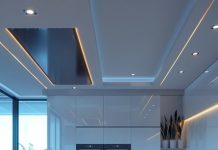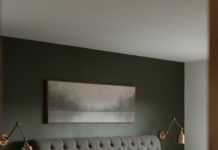
Commercial buildings operate under conditions that test every component of their infrastructure. Doors in particular face constant opening, closing, and incidental contact that can compromise durability if the material cannot withstand continuous strain. Retail stores, schools, hospitals, and office towers often experience nonstop movement from early morning to late evening. This dynamic environment requires building materials that balance strength, longevity, and reliability. Solid core wood doors have emerged as a preferred choice because they deliver a level of robustness that hollow alternatives cannot match.
High-traffic areas also require solutions that maintain visual appeal over time. The interior design of commercial spaces must reinforce the building’s brand and professionalism while withstanding heavy use. Solid core wood doors provide the visual warmth and architectural sophistication that many designers look for in commercial interiors. They also offer a consistent appearance even after years of service, which makes them an investment in aesthetics as well as function. The material’s inherent density helps it resist dents, scratches, and surface imperfections that are common in busy facilities.
Facility managers face constant pressure to balance cost and long-term value. Doors that fail prematurely disrupt daily operations and add financial burdens related to repairs and replacements. Solid core wood doors reduce these concerns by offering a dependable lifespan that significantly outperforms hollow core options. This reliability translates into fewer maintenance cycles and greater long-term savings. For commercial spaces that prioritize performance and operational stability, solid core wood doors deliver advantages that align directly with the demands of modern business environments.
The Structural Advantages of Solid Core Wood Doors
Solid core wood doors are engineered with a densely packed interior that enhances their durability. The uniform mass provides structural strength that helps the door retain its shape even after years of use. This is particularly important in high-traffic environments where lesser materials can warp or weaken under stress. The solid core also gives the door a reassuring weight that contributes to its premium feel, a quality that many building owners value. These structural benefits together create a door that stands up to daily wear without compromising performance.
In addition to overall strength, solid core construction offers superior resistance to impact. Commercial spaces frequently encounter carts, equipment, or luggage that may accidentally collide with doors. A solid core design absorbs these collisions with far less visible damage than hollow alternatives. This resilience helps maintain the professional appearance of the space while reducing the need for repairs. Over time, this performance consistency supports a more stable and predictable maintenance schedule.
Moisture resistance is another structural advantage that often goes overlooked. Solid core wood doors are less vulnerable to environmental fluctuations compared to hollow doors, which can trap humidity or develop weak points more easily. While not entirely resistant to water, the dense construction provides stronger defense against warping in settings such as hospitals, restaurants, and educational facilities. Facilities that rely on stable interior climate control benefit from this reliability. This stability ultimately ensures that the doors function properly without unexpected issues related to environmental conditions.
Sound Control and Acoustic Performance
Sound management is a critical factor in many commercial environments. Offices, schools, healthcare facilities, and hospitality venues all require acoustic separation to support privacy and productivity. Solid core wood doors excel in this area because their dense construction naturally reduces sound transmission. This makes them ideal for areas where conversations, confidential information, or sensitive interactions require discretion. The reduction of noise contributes to a calmer and more focused environment for both employees and visitors.
Acoustic performance is not only important for privacy but also for overall occupant comfort. In busy commercial spaces, noise can quickly become overwhelming and reduce workplace efficiency. Solid core doors serve as a natural barrier against excessive sound movement, helping to create quieter work zones and meeting rooms. This contributes to a more structured and efficient workflow. Buildings that prioritize sound control often integrate solid core doors as part of a broader acoustic strategy.
The consistency of the door’s interior helps maintain its acoustic benefits over time. Unlike hollow doors that may deteriorate and lose their structural integrity, solid core wood doors remain stable even after long periods of use. This ensures that sound management remains effective throughout the lifespan of the door. When paired with proper installation and quality hardware, these doors reinforce a building’s acoustic design goals. For commercial spaces that require both function and comfort, solid core doors offer dependable long-term performance.
Practical Considerations for Aesthetics and Design
Architects and designers appreciate solid core wood doors for their aesthetic versatility. They can be finished in a wide range of veneers, stains, and paints to match the overall design scheme of the building. This adaptability allows them to blend seamlessly into both modern and traditional interiors. Their presence enhances the perceived quality of the commercial environment, contributing to a cohesive and polished look. This visual flexibility is one of the reasons solid core doors remain a leading specification choice in professional design plans.
In addition to design flexibility, these doors maintain their aesthetic integrity even in high-use areas. Surface scratches, dents, and wear are far less noticeable on solid core construction. The doors can also be refinished over time, extending their lifespan and preserving the original design intent. This makes them a cost-effective choice for facilities seeking to maintain a consistent appearance without frequent replacements. The ability to restore the surface helps preserve the long-term value of the investment.
During the selection process, many facility managers compare wood door options by assessing durability, cost, and safety. In researching available options, many discover resources such as the Solid Core Wood Door selection offered by USA Fire Door, a nationwide distributor of commercial door products, which can serve as a reference point for understanding commercial grade solutions. Exploring such product listings offers valuable insights into finish options, performance ratings, and installation considerations that guide the decision-making process. With the right specifications in place, commercial spaces benefit from doors that elevate design quality while supporting operational demands. Solid core wood doors ultimately deliver an ideal balance of style and function for a wide spectrum of environments.
The Role of Fire Ratings and Safety Standards
Safety is one of the most critical considerations in commercial building design. Solid core wood doors often meet or exceed national fire safety standards when manufactured with the proper fire rated core. These doors can slow the spread of fire and smoke, giving occupants more time to evacuate and protecting valuable property. Fire rated solid core doors are frequently required in corridors, stairwells, and areas surrounding mechanical equipment. Their use supports a building’s compliance with local and federal codes.
In addition to fire resistance, solid core doors contribute to broader safety and security goals. Their weight and density make them more challenging to breach, which is beneficial in sensitive areas such as data centers or administrative offices. While they are not a substitute for advanced security systems, they act as a first line of defense in restricting unauthorized access. This inherent strength offers peace of mind to building owners concerned about protecting staff and assets. A well designed commercial space integrates these doors as part of a layer based security approach.
The performance of fire rated solid core doors remains stable under demanding conditions. Manufacturers design these products to meet rigorous testing standards that evaluate temperature resistance, smoke containment, and structural integrity. Once installed, the doors continue to perform reliably provided they are maintained according to inspection requirements. For facility managers, choosing solid core options simplifies compliance because these doors often align with regulatory expectations. Their role in fire and safety planning makes them a practical investment for any building that prioritizes occupant protection.
Lifecycle Value and Long-Term Cost Efficiency
One of the strongest advantages of solid core wood doors is their long-term economic value. Upfront costs may be higher than hollow alternatives, but the extended lifespan offsets the initial investment. Their ability to withstand years of heavy use reduces the need for replacements and minimizes ongoing maintenance expenses. This long-term value is particularly important for facilities with large numbers of doors, where replacement cycles can become costly. As a result, many commercial property owners select solid core doors not only for performance but also for cost stability.
Beyond durability, the doors contribute to operational efficiency. Their sturdiness supports consistent functionality in busy environments that depend on reliable access. When doors perform consistently, staff waste less time addressing mechanical issues or navigating around malfunctioning entryways. This predictability contributes to smoother workflow and better building management practices. Over time, this operational stability supports the overall efficiency of the commercial space.
Insurance and liability considerations also influence lifecycle value. Facilities equipped with fire rated doors often benefit from improved safety compliance and potentially lower risk assessments. Solid core doors that meet performance standards can reduce the likelihood of damage during emergencies or everyday accidents. This lowers long-term risk and adds a layer of financial protection for property owners. With these combined advantages, solid core wood doors play a practical role in cost management strategies for commercial environments.
Installation and Maintenance Best Practices
Proper installation is essential for maximizing the performance of solid core wood doors. The weight of the doors requires sturdy frames, quality hardware, and precise alignment. Professional installation ensures that the door swings correctly, seals properly, and meets safety code requirements. Failure to install the door correctly can limit its benefits in terms of sound control, fire safety, and longevity. Facility managers should always partner with experienced installers to ensure the door’s full capabilities are realized.
Routine maintenance also plays an important role in preserving the door’s performance. Solid core wood doors require periodic inspection to ensure hinges remain tight and surfaces maintain their finish. While these doors are inherently low maintenance, addressing small issues early prevents larger problems later. Regular cleaning and occasional refinishing help sustain the door’s appearance, especially in high-visibility areas. A maintenance routine aligned with manufacturer recommendations extends the door’s lifespan and enhances long-term performance.
Environmental control is equally important in maintaining the structural integrity of solid core wood doors. Excessive humidity or extreme temperature changes can affect any wood-based product if not managed properly. Commercial buildings with stable climate control systems support the long-term performance of their doors. When combined with proper installation and routine care, solid core wood doors maintain their durability and function throughout years of heavy use. These maintenance practices ensure that commercial spaces continue to benefit from the investment well into the future.










